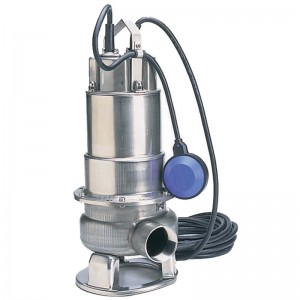 The Honda WSP50 is designed to handle a range of dirty, debris-filled fluids from rainwater to sewage, so it should be no surprise if the occasional snag pops up during operation. This guide will help you troubleshoot common issues and get your pump running again in no time.
The Honda WSP50 is designed to handle a range of dirty, debris-filled fluids from rainwater to sewage, so it should be no surprise if the occasional snag pops up during operation. This guide will help you troubleshoot common issues and get your pump running again in no time.
Safety Disclaimer
Before any maintenance or repairs, cut the supply of electricity to the pump to prevent electrocution and accidental pump activation.
Always wear gloves when cleaning the pump: some parts inside the pump, particularly the impeller, are very sharp and can cause cuts when handled.
Lifting the pump by the power cord could cause damage to the cord and insulation, resulting in pump failure or electrocution. Always lift the pump by the handle or by a rope tied to the handle.
Is the Pump Being Used Correctly?
No matter how many times it is repaired, the pump will fail if used in situations outside of its design parameters. These are the four most common issues that lead to pump failure:
– The pump’s power cable needs to be plugged into a properly grounded three prong receptacle.
– Debris over two inches (50 mm) in diameter can’t be moved by this pump and may become lodged in the intake, impeller or delivery pipes.
– Fluid temperatures over 104°F (40°C) can cause the motor to overheat.
– Pumping flammable liquids and corrosive liquids including sea water and acids can damage pump components.
Problem: The Pump Motor Doesn’t Turn
Plug not inserted: Check the connection between the plug and the outlet.
No electricity: Check the electric line and any fuses and circuit breakers on the line.
Impeller blocked: See “Cleaning the Impeller” below on how to access the impeller and remove debris.
Thermal protection has been tripped: This will reset automatically once the motor has cooled. See “Problem: The Pump Stops Often Due to Tripping the Thermal Protection Switch” for ways to eliminate thermal issues.
Hole in the intake cover is blocked: Clean the hole.
No-return valve blocked: Clean the valve and make sure it moves freely.
Problem: Pump Flow Rate is Low
The impeller or delivery pipes are dirty: Clean out the pipes and impeller. See “Cleaning the Impeller” below.
No-return valve blocked: Clean the valve and make sure it moves freely.
Water level too low: Switch off the pump. If this happens repeatedly, adjust the float switch so it will shut off at a higher water level.
Wrong voltage: Supply the pump with the correct voltage. This is usually not a problem with household electricity, but problems may arise when using this pump with a generator. The power requirements are listed on a plate on the side of the pump casing.
Problem: The Pump Stops Often Due to Tripping the Thermal Protection Switch
The impeller is blocked: Remove any debris stuck in the impeller. See “Cleaning the Impeller” below.
Liquid temperature is too high: Immersing the pump in liquids over 105°F (40°C) can cause the motor to overheat.
Internal defects: An issues inside the motor casing may be causing problems. Have the pump serviced by a dealer.
Cleaning the Impeller
The pump cover will need to be removed to reach the impeller. To do this, look at the pump from the top and locate six screws around the base. Remove these screws: there is also a nut in one of the screw positions, but it is welded to the pump body and does not need to be removed. The pump body, the bottom part of the casing with the pump stand, should now slide off. Remove the O-ring beneath the cover, and the impeller will be completely uncovered.
Once the impeller is clean, reassemble in the reverse order, replacing the O-ring if it has become stretched or otherwise damaged.
Where to Buy Honda Water Pump Parts
If it’s a piece of small equipment and it says “Honda” on it, www.hondalawnparts.com has the parts to keep it running. Yes, even this pump, which is manufactured for Honda by Ebara. Ordering is easy thanks to an advanced search engine with parts diagrams and online access to experienced staff who can help you identify the parts and accessories you need. Once you find the part you need, it can be shipped to any address in the U.S. and Canada.
